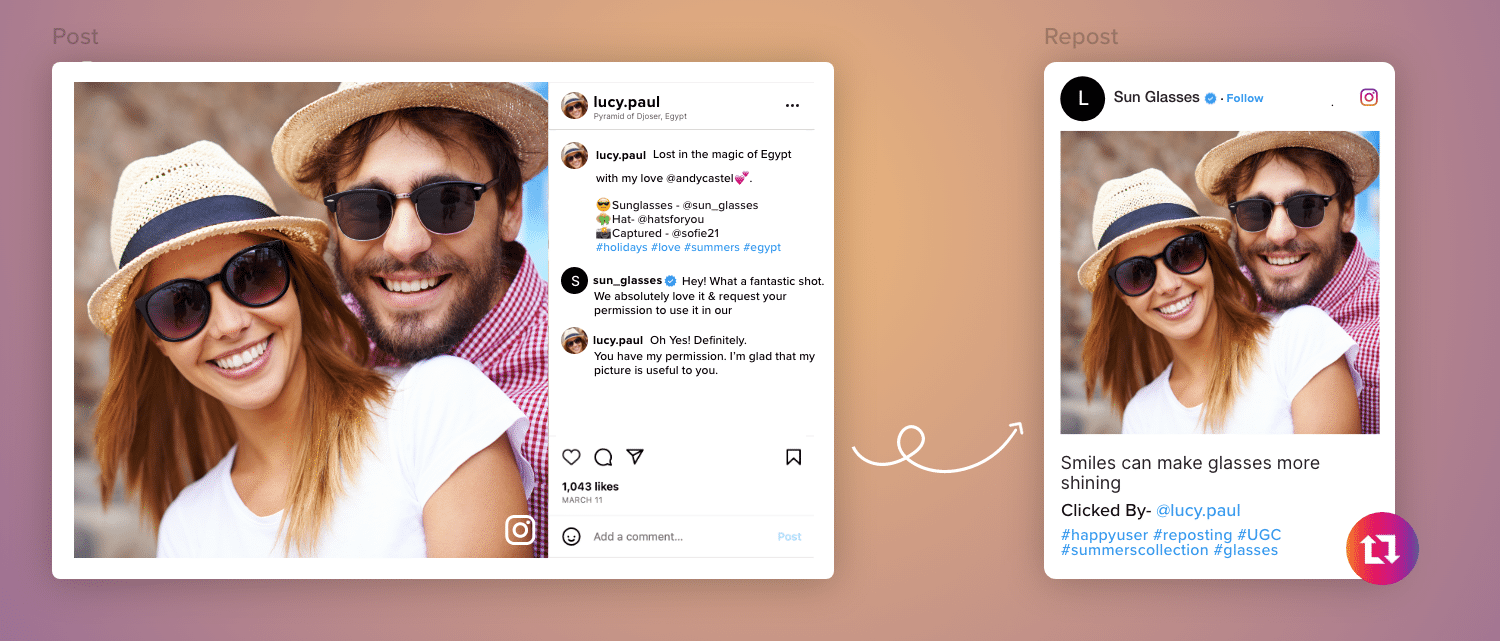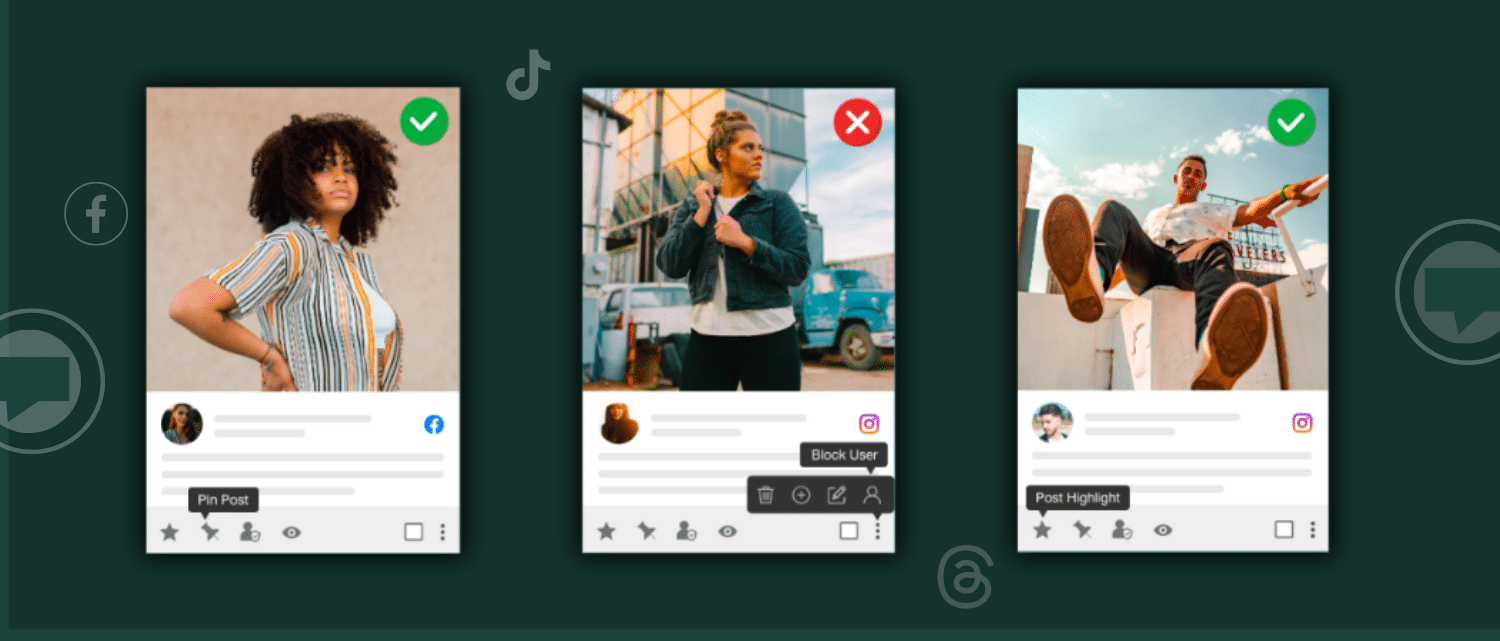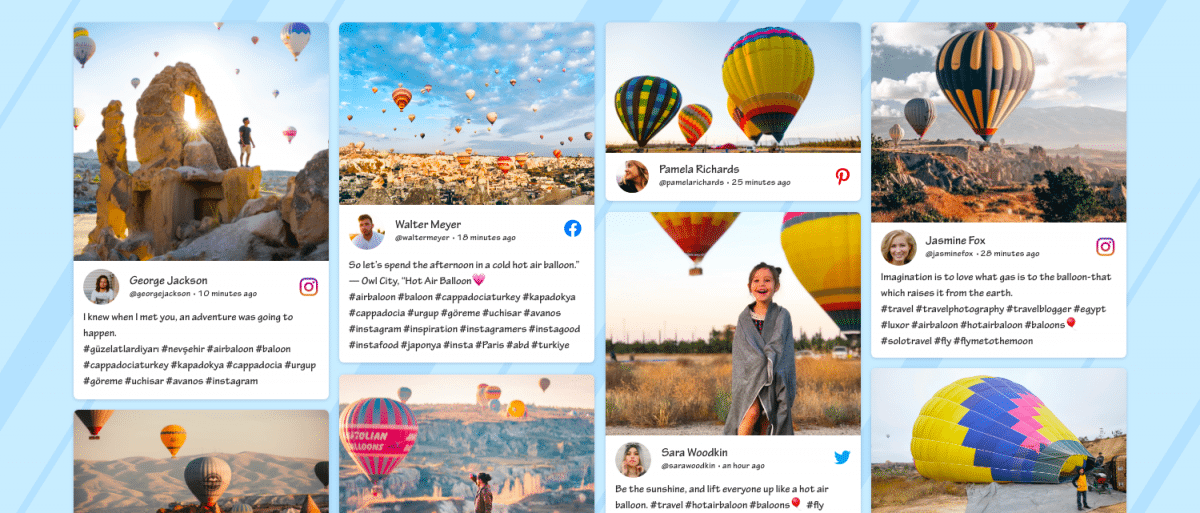Social Media Content Rights – Understanding Best Ways to Repurpose Users’ Social Content
One of the biggest misconceptions about social media content is that it can be repurposed by the third-party platforms without getting the rightful access from the original content creator. But there’s nothing like that.
In this blog, we will enlighten you with the best ways to get social media rights to post users’ content for marketing purposes. So, let’s begin!
“Associated with seeking permission from the original content creators to repurpose the social media content for a brand’s campaign is termed as Social Media Content Rights Management.”
Let’s first start with understanding basics of Social Media Content Rights!
Social Media Rights- What are They?
Said to be the hub of user-generated content, social media platforms let users create content and share it with their networks.
But with pros come cons. As the content (images, videos & texts) on social media platforms like Facebook, Twitter, LinkedIn, Pinterest, Instagram, Tumblr, and more accessible to everyone globally, there are more chances of online misuse.
For instance, there are times when brands and users use any content created by a third-party without their permission. This often raises issues like trademark infringement, copyright infringement, which comes under Social Media Laws.
To prevent brands from the legal hassle, Social Media Content Rights Management has been introduced that we’ll discuss later.
Why You Should Repurpose Social Media Content?
Ideal for any sort of content marketing strategy, social media content that is generated by the users is considered to be extremely trustworthy & authentic.
This is why brands utilize this form of content as a part of their marketing strategy to convey a consistent message at every touchpoint.
While by leveraging social media content, brands can improve user-brand interaction, audience engagement, boost brand awareness, build brand trust, increase sales & revenue, and more.
Toyota, Apple, Starbucks, etc. are some great examples of brands that have used social media content to increase social engagement, amplify conversion rates, higher return on investment, etc.
Know When To Get Rights for Social Media Content
With social media content, there comes a couple of questions that brands should ask themselves. For instance:
- Is it okay to use social media content?
- When to get permission to use social media content and from whom?
- Will they use the content for profit purposes? etc.
Well, social media content can’t be freely used by anyone, especially when a brand plans to use that content for advertising or commercial purposes.
All thanks to tools that have helped brands to get social media rights from the content creators to retain the legal rights to their content.
Speaking of social media content, every social network makes users sign an agreement. In this agreement, it is mentioned that the particular social network and its partners have the license/authority to make public display or sharing of content, but under certain restrictions.
However, under the protection of Terms of Services (TOS), most social media networks don’t allow the brand to leverage social media content for advertisement or money-making from it.
So, brands should better seek permission from the original creator of the particular content to avoid legal hassles such as content copyright infringement, etc.
Ways to Get Social Media Rights For Content
There are two major ways through which a brand can get legal permission to repurpose social media content. Both of them are mentioned below!
1. Implicit Consent – Hashtag Campaigns
As the name suggests, Implicit Consent or Implied Consent is the traditional way of directly generating content from users.
In this process, brands encourage users to use a specific hashtag to create and share users’ content related to their products & services.
Also, the users are told in advance that their content might be featured on the brand’s website or social media networks.
In this way, users already know the brand’s implicit intention of repurposing their content.
Therefore, if the customers are participating in the hashtag campaigns on social media willingly, that means they agree to the terms and conditions of the brand.
The world’s largest “#StarbucksDate: a day for all those singles to mingle” which was introduced by Starbucks is one of the best examples of Implicit Consent.
The campaign was initiated on February 13, 2015, by the brand to celebrate both romantic as well as platonic connections.
In this campaign, customers were invited to join the World’s Largest Starbucks Date at Starbucks locations all across the globe.

If simply put, in implicit consent, participants understand that their content will be shared for a brand’s marketing purpose.
And therefore a brand doesn’t need to ask for access to show user-generated content on any other platform.
2. Explicit Consent – Ask for Permission
This case is completely the opposite of Implicit Consent. If utilized properly, the user-generated content can do wonders for a brand.
Unlike the campaign-driven implicit consent, Explicit Consent is referred to as seeking permission from original content creators for their content through messages, or third-party tools.
Said to be more authentic than campaign-driven content, explicit consent increases the demand for social media content rights even more but brands have to put a little extra effort to gather content.
To make the users accept the terms & conditions of Explicit Consent, brands need to apply a few tips while connecting with users;
- Repurpose reason should be clear: Make sure your user knows how you are planning to repurpose the content you’re requesting rights for.
- Maintain a friendly tone: Instead of being formal, try to sound more authentic by maintaining a friendly tone. Start with thanking the person who you’re requesting rights for in advance as well as be ready to answer their spontaneous questions.
- Choose a unique hashtag: Get your audience’s attention by choosing a specific yet unique hashtag.
- Create multiple message templates: Don’t use the same message template to reach the users. Instead have multiple message templates with variations.
- Use an official public account: Use your brand’s official account to reach out to the users as it seems more trustworthy.
This way you can spread your intentions to the users regarding their content and therefore get access to their social media content.
Best Solution for Social Media Rights Management – TAGGBOX
Taggbox – UGC Rights Management is a product from Taggbox a UGC platform that helps you collect, curate, share & track content rights requests and repurposes the approved user-generated content.
The features offered in Rights Management by Taggbox are mentioned-below!
1. Custom Branding: Taggbox Rights Management allows brands to build social proof by letting them upload their brand logo and content file.
Also, it offers a trustworthy & reliable option of creating a personalized social media rights request option as well as personalized social media content T&C attachment for each user.
2. Download Approved Media: It allows you to download approved images for your individual use.
3. Legal Log Maintenance: Once you generate the users’ rights request you have the power to track its status.
For eg., whether your content rights request has been approved, pending, or rejected, you can find it out in the Moderation Panel.
Social Media Rights Management
Getting Users’ Content Rights Easier Than Ever
Takeaway
Leverage the mind-blowing benefits that come with Media Rights Management including improving brand image, build strong brand-user relationships, boost audience engagement, and others as well.
One thing that you need to keep in mind is that you can’t get the users’ content Rights by following unfair practices.
Hope you have found this useful. In case of any query feel free to contact us.








